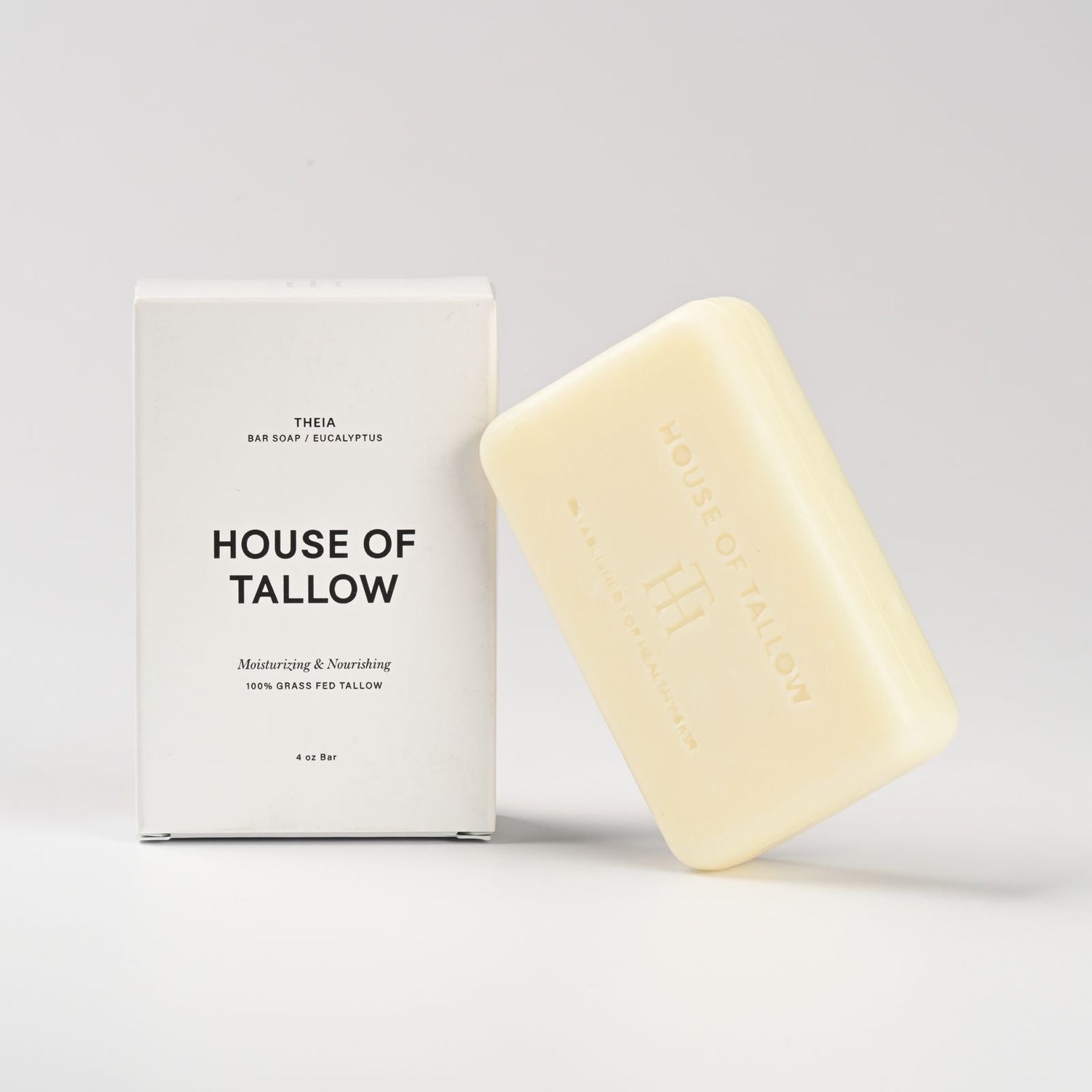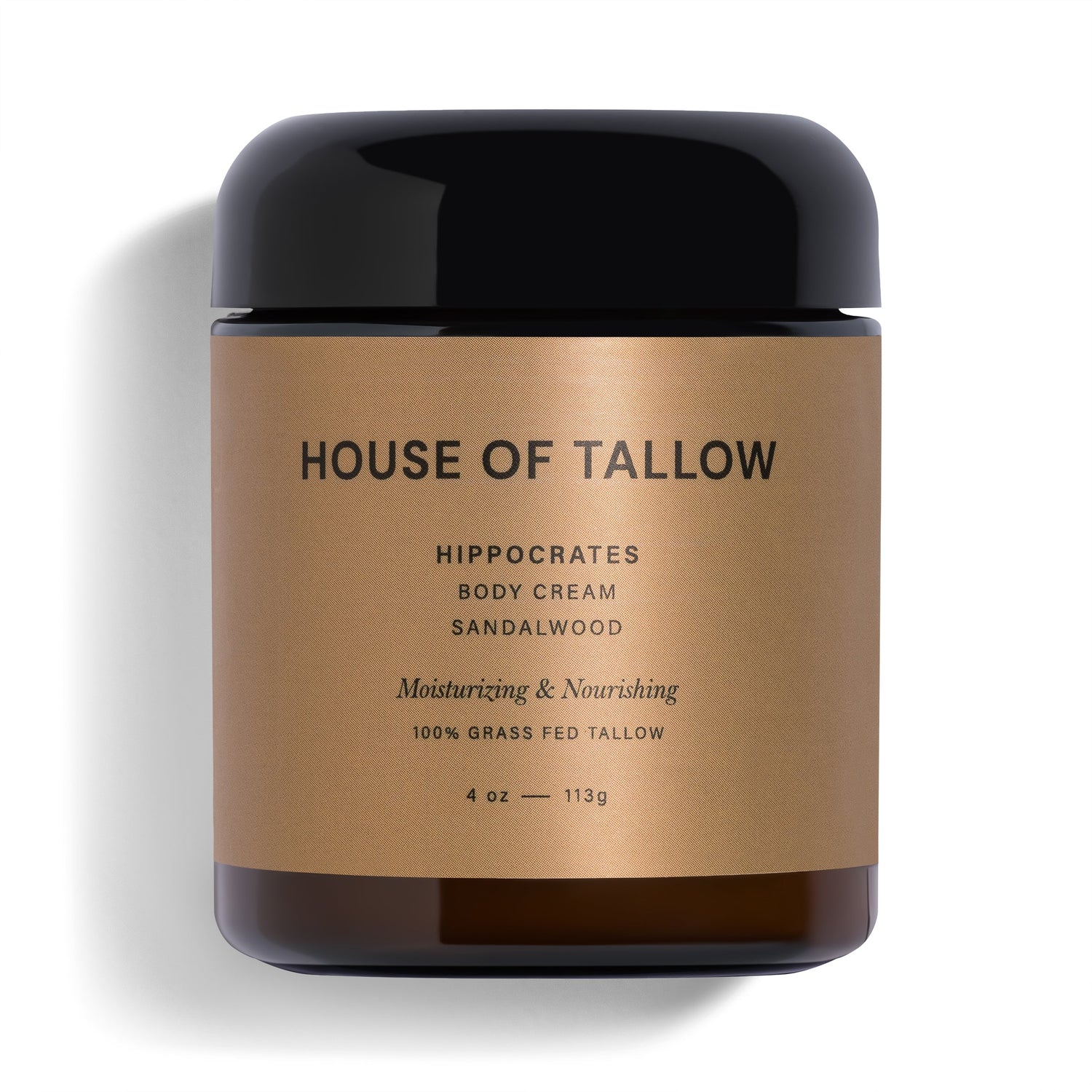Struggling to choose between tallow and synthetic moisturizers? Here's the key difference: tallow-based moisturizers use natural beef tallow, rich in vitamins (A, D, E, K) and fatty acids that mimic your skin's natural oils, offering deep hydration and soothing properties. Synthetic moisturizers rely on lab-made ingredients like parabens and silicones, providing quick but often temporary hydration with potential for irritation.
Quick Comparison:
| Feature | Tallow-Based Moisturizers | Synthetic Moisturizers |
|---|---|---|
| Key Ingredients | Grass-fed tallow, vitamins, oils | Parabens, silicones, additives |
| Skin Benefits | Deep hydration, calming effects | Quick hydration, may irritate |
| Preservatives | Minimal, natural | Parabens, sulfates |
| Sustainability | Ethically sourced, lower impact | Higher environmental footprint |
If you want long-lasting hydration and natural ingredients, tallow-based is the way to go. For quick fixes, synthetic moisturizers may suit you better. Keep reading to understand which fits your skin and values.
Why Is Everyone Putting Beef Tallow On Their Skin?
Understanding Tallow-Based Moisturizers
Tallow-based moisturizers use grass-fed beef tallow to provide nutrients that work in harmony with your skin's natural functions. Unlike synthetic options, these moisturizers focus on aligning with your skin’s needs.
How Tallow Benefits Your Skin
Tallow-based moisturizers stand out thanks to their unique nutrient profile and molecular structure. The fatty acids in tallow, such as linoleic acid, play a key role in supporting skin health. Here’s how they help:
| Benefit | How It Works |
|---|---|
| Deep Hydration | Delivers lasting moisture |
| Barrier Support | Strengthens the skin’s defenses |
| Calms Inflammation | Reduces redness and irritation |
| Collagen Boost | Encourages collagen production |
In addition, tallow is packed with vitamins. Vitamin A works like a natural retinol to promote cell renewal, while vitamin K helps protect your skin from external stress.
Spotlight on House of Tallow

House of Tallow creates skincare products using grass-fed tallow as the star ingredient. Their moisturizers are designed to absorb easily and deliver nutrients effectively, all while keeping the ingredients simple and natural.
What makes House of Tallow stand out is their focus on responsible sourcing and high-quality standards. Their products not only address dryness but also help with stubborn skin issues, thanks to their calming properties. By prioritizing sustainable practices, they ensure their moisturizers harness the full potential of tallow while staying true to their values.
While tallow-based moisturizers emphasize nutrient-rich, natural care, synthetic alternatives often rely on a different approach to skincare.
Understanding Synthetic Moisturizers
Synthetic moisturizers are formulated with a mix of 15 to 50 chemical components, each playing a specific role in the product's performance [2].
Ingredients Found in Synthetic Moisturizers
Here’s a quick look at some common synthetic ingredients and their effects:
| Ingredient Type | Examples | Purpose | Key Concerns |
|---|---|---|---|
| Preservatives & Surfactants | Parabens, SLS/SLES | Extend shelf life, Create lather | Hormonal disruption, Skin irritation |
| Emollients | Petrolatum | Soften skin | May block natural moisturizing |
| Fragrances | Artificial scents | Mask chemical odors | Can cause allergic reactions |
These ingredients may offer fast relief from dryness, but they can interfere with your skin’s natural ability to retain moisture, potentially creating a cycle of dependence on the product [5][4].
Shelf Life and Durability
Synthetic moisturizers are known for their long shelf life, thanks to preservatives like parabens that prevent microbial growth and maintain stability under various conditions. This durability helps reduce waste and manufacturing costs, but prolonged use of these preservatives may lead to skin sensitivity [1][4].
Additionally, the production and disposal of synthetic ingredients raise concerns about their impact on the environment. This contrasts with simpler alternatives like tallow-based moisturizers, which avoid heavy reliance on chemical additives while focusing on natural formulations.
sbb-itb-a1b9fc0
Comparing Tallow and Synthetic Moisturizers
Ingredients and Skin Safety
Both tallow-based and synthetic moisturizers aim to hydrate your skin, but they differ greatly in their ingredients and preservation methods:
| Component | Tallow-Based | Synthetic |
|---|---|---|
| Preservatives | Minimal, natural preservatives | Parabens, sulfates, alcohols |
| Fragrance | Essential oils or unscented | Artificial fragrances |
These differences in ingredients also affect how each type interacts with your skin.
Skin Benefits of Each Type
Tallow-based moisturizers offer deep and long-lasting hydration. Thanks to their molecular structure, they absorb easily and help retain moisture effectively.
"Tallow balm won't strip your skin of good bacteria. But it will still target the bad stuff and help remove it." [3]
Synthetic moisturizers, on the other hand, provide quick hydration but tend to evaporate faster, often requiring frequent reapplication [4]. While they offer immediate relief, prolonged use may disrupt your skin's natural moisturizing balance.
But the conversation doesn’t stop at skin health - how these products impact the environment and ethical considerations also plays a role.
Environmental and Ethical Considerations
Tallow-based moisturizers, especially those made from grass-fed sources, often support sustainable farming practices. Brands like House of Tallow prioritize transparency in sourcing and responsible production methods.
Synthetic moisturizers, however, depend on energy-intensive manufacturing, non-renewable resources, and elaborate packaging, which increases their environmental impact [4]. While they are often more affordable and widely available, their production footprint has led many consumers to explore natural alternatives [1][4].
Choosing between these two types of moisturizers involves weighing immediate results against long-term skin health and environmental impact. Understanding these differences can help you pick a product that aligns with your skincare needs and personal values.
Conclusion: How to Choose the Right Moisturizer
Deciding between tallow and synthetic moisturizers comes down to your skin's needs and personal priorities. Tallow's natural fatty acids closely resemble the oils your skin produces, offering deep hydration and helping with persistent dryness or irritation. This makes it a great option for sensitive skin or for those looking to avoid artificial ingredients.
When comparing options, focus on how well the ingredients work for your skin. Tallow moisturizers are known for penetrating deeply and providing nourishment, making them especially helpful for dealing with ongoing dryness or skin inflammation.
For those concerned about environmental impact, tallow-based products from responsibly sourced brands tend to be a more eco-conscious choice.
Tallow vs. Synthetic Moisturizers: Side-by-Side Look
| Feature | Tallow-Based Moisturizers | Synthetic Moisturizers |
|---|---|---|
| Key Ingredients | Grass-fed tallow, vitamins A, D, E, K | Silicones, parabens, artificial additives |
| Skin Health Benefits | Deep hydration, soothing properties | Basic hydration, potential for irritation |
| Safety Concerns | Gentle on sensitive skin | May contain allergens or harsh chemicals |
| Sustainability | Ethically sourced, lower impact | Higher environmental footprint |
Ultimately, your choice should balance short-term convenience with long-term skin health. While synthetic moisturizers may provide quick hydration, tallow-based options often deliver deeper, lasting benefits with fewer risks.
If you're new to tallow-based moisturizers, try a small amount first to see how your skin reacts. Pay attention to how your skin feels over time to determine if it's the right fit for you.
These insights can help you make an informed decision, but there’s still curiosity about the science behind tallow’s skin benefits.
FAQs
Is beef tallow scientifically proven?
Scientific research specifically on tallow's skincare benefits is still scarce. While it’s known to be rich in vitamins A, D, E, and K, as well as fatty acids, much of its reputation comes from historical use and personal testimonials rather than extensive studies.
Tallow is believed to closely resemble human skin oils and may offer moisturizing, anti-inflammatory, and antibacterial properties. For example, its oleic acid content is known to improve hydration and help with absorption, according to dermatological findings [3][6].
If you’re thinking about trying tallow-based products, here are some tips:
- Choose products made with grass-fed tallow from trusted brands.
- Pay attention to how your skin reacts over time.
Though long-term effects and standardized data are lacking, tallow’s natural composition and its compatibility with human skin make it an interesting option for those looking to avoid synthetic moisturizers [1][4]. While more research is needed, its historical use and natural properties suggest it could be a safe and effective choice.




